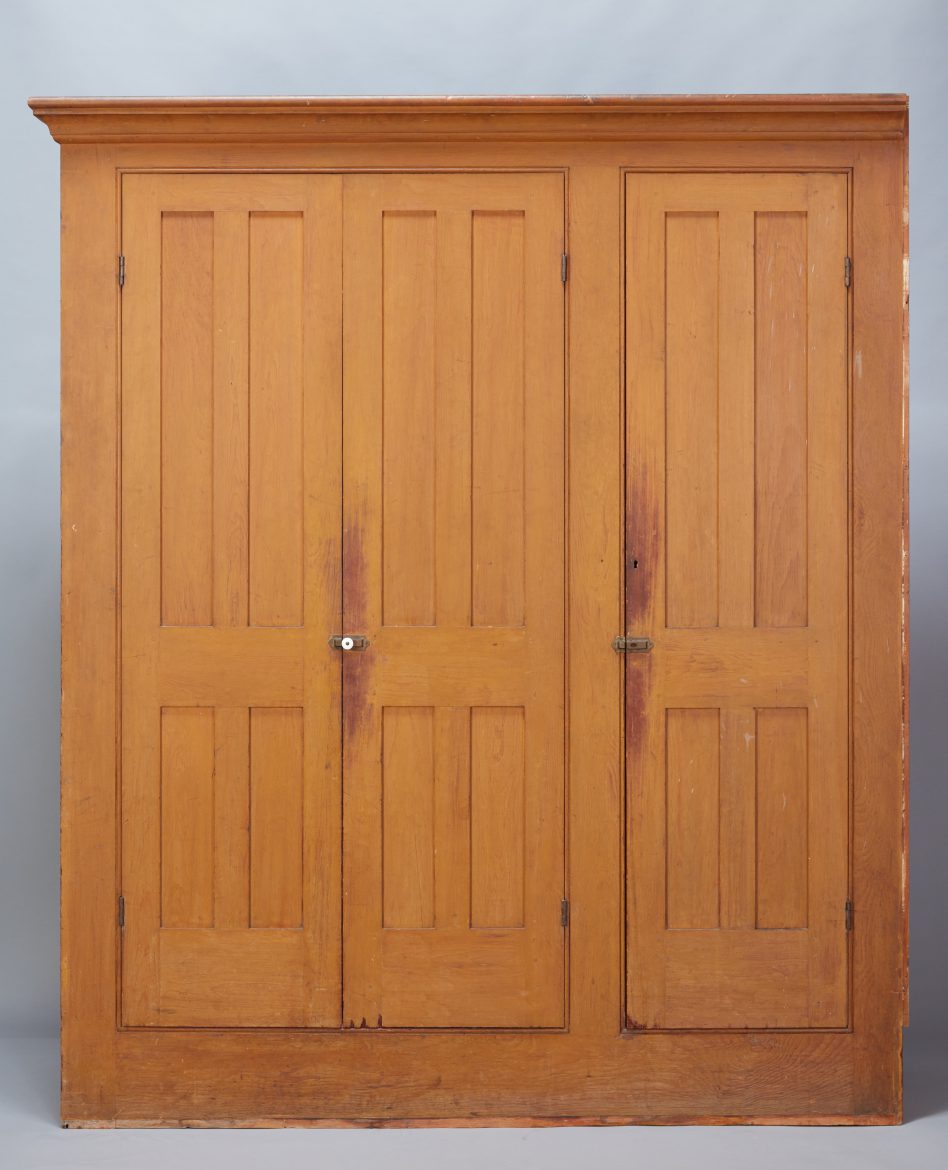
Cupboard with Three Doors, Church Family, Hancock, MA, ca. 1820s, Shaker Museum | Mount Lebanon: 1958.10448.1, John Mulligan, photographer.
As frequent readers of this blog already know, Shaker Museum | Mount Lebanon is photographing and electronically cataloging its collection in order to create an online catalog that will be shared with the public beginning in 2018. The project, funded by a $750,000 grant from the Henry Luce Foundation, provides the opportunity for staff to […]
As frequent readers of this blog already know, Shaker Museum | Mount Lebanon is photographing and electronically cataloging its collection in order to create an online catalog that will be shared with the public beginning in 2018. The project, funded by a $750,000 grant from the Henry Luce Foundation, provides the opportunity for staff to re-examine many pieces from the collection.

Cupboard with Three Doors, Church Family, Hancock, MA, ca. 1820s, Shaker Museum | Mount Lebanon: 1958.10448.1, John Mulligan, photographer.
Such is the case with this three-door cupboard. The cupboard was obtained in 1958 from the ironing room located in the Shakers’ Machine Shop and Laundry building at the Hancock Shaker Village in Massachusetts. As the cupboard was being photographed recently, it was possible to examine its construction closely and verify that the piece was originally built into the fabric of the room from which it was removed. It appears that the tongue-and-groove boards used to close in the back of the cupboard were not original to the piece because these boards were likely destroyed during removal. The boards on its back and proper right end were replaced by the Shaker Museum with recycled Shaker boards and it is hard to discern whether the piece ever had a proper back and right end.

Ironing Room, Laundry and Machine Shop, Church Family, Hancock, MA, 1931, Historic American Buildings Survey, HABS MASS,2-HANC,14—12, William F. Winter, Jr., photographer.
Photographs of the ironing room taken in 1931 by William F. Winter, Jr., now in the collection of the Historic American Buildings Survey, show the cupboard in its original location. A quick trip to Hancock Shaker Village and an examination of that location provided further information on the history of the piece. The wall against which the cupboard was built in retains a rail with iron hooks. There are two cuts in this rail – one that allowed the left end of the cupboard to fit tight against the wall and one where the board dividing the two compartments was likewise fit against the wall. A short piece of rail mounted on the wall against which the right end of the cupboard butted also has a cut out that allowed the front of the cupboard to fit against that wall. This evidence – the cuts in the rail and the Shaker-replaced back boards — strongly suggest that the piece was not originally built for this location and that it very well may have been moved there from another building and installed against the wall. In its original location the back of the cupboard may have merely been the wall against which it was built – explaining why the Shakers had added tongue-and-groove boards to create a back.

Interior View of Ironing Room, East Wall, Church Family, Hancock, MA, 2017, Shaker Museum | Mount Lebanon, staff photograph.
It is relatively rare to be able to connect a piece of built-in furniture with the building and the specific location from which it was removed. Often the demolition of the building was the reason the piece was available in the first place. This cupboard, with the Historic American Buildings Survey photographic documentation of its last Shaker location and the existing evidence from the building, now has a much clearer history.